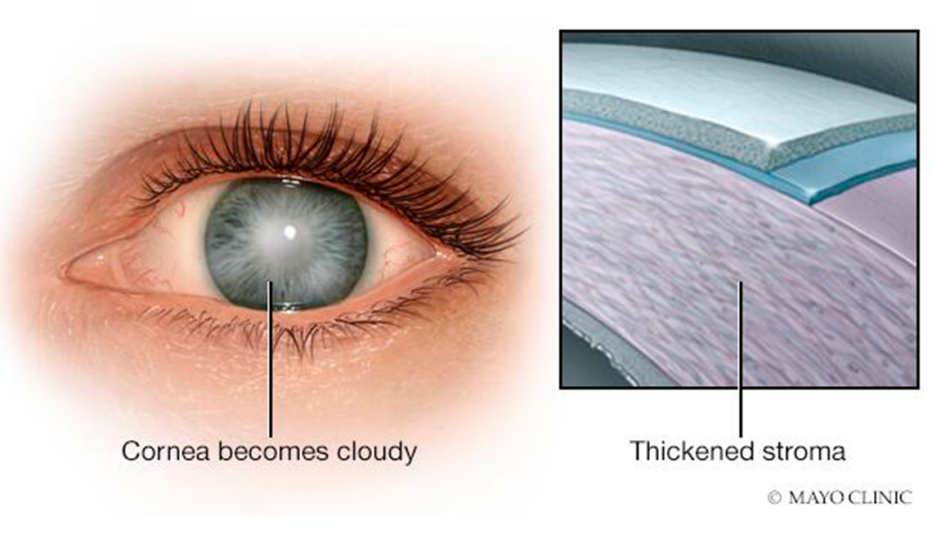AARP Hearing Center


Norine Kirby, 69, knew blurry vision is a typical temporary side effect after cataract surgery. But when she still couldn’t see clearly several weeks after her February surgery, Kirby suspected something else was wrong.
“It was like I was looking through a snow globe,” says Kirby, of Carroll County, Maryland. “Everything was blurry.”
When Kirby went back to her ophthalmologist, she was diagnosed with Fuchs’ dystrophy, a genetic eye disease that affects the cornea.


Although Fuchs’ dystrophy is a condition that patients are born with, it typically causes vision problems that develop later in life.
Cataract surgery doesn’t cause the disease, but it can exacerbate symptoms, says Zeba Syed, M.D., an ophthalmologist who specializes in cornea, cataract and refractive surgery at Wills Eye Hospital in Philadelphia. It’s not uncommon for patients to learn they have the disease after the surgery, Syed says.
About 4 percent of Americans over age 40 have Fuchs’ dystrophy, according to the National Library of Medicine. Women are two to four times more likely to develop Fuchs’ than men. The condition is named after Austrian ophthalmologist Ernst Fuchs, who first described it in the 1920s.
What causes Fuchs’ dystrophy?
When you have Fuchs’ (pronounced “fooks”) dystrophy, the cells responsible for pumping extra fluid out of your eyes start to die off. As the disease progresses, fluid builds up in your cornea, causing swelling and cloudy vision, Syed says.
“The cornea is like a sponge that can get swollen,” Syed says. “You want it to be clear and compact. When it’s swollen, it gets cloudy, and patients can’t see.”
The disease can also cause small blisters to form on your cornea that can break and cause eye pain.
Fuchs’ dystrophy usually affects both eyes. Although it’s a genetic disease, some patients don’t know anyone in their families who has had it, Syed says.




































































More on Eye Health
7 Mistakes You May Be Making With Eye Drops
How to keep your eyes healthy and free of infection
Is Caffeine Good or Bad For Your Eyes?
How your morning (and afternoon) cups of coffee affect five eye conditions
6 Best Vitamins for Eye Health
Find out which nutrients are essential for protecting vision